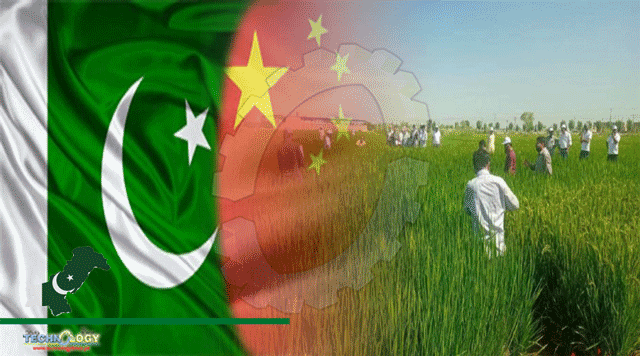Chinese seed company is looking forward to establishing a technology transfer-product process-export model for seed cooperation with Pakistani partners.

Chinese seed company is looking forward to establishing a technology transfer-product process-export model for seed cooperation with Pakistani partners.
“Under this model, we grow crops in Pakistan utilizing Chinese technology together with local companies and then sell the processed products back to China”, said Zhou Xusheng from Wuhan Qingfa Hesheng Seed Co., Ltd in an interview following a recent salon on market access organized by the National South Asian Standardization (Chengdu) Research Center of China and attended by participants from both Pakistan and China.
Take hybrid rice as an example. Pakistan, once the world’s seventh-largest rice exporter, became the fourth-largest after the introduction of hybrid rice from China, which improves production by 50-80% and enhances the process quality by 10%.
By doing so, local farmers benefit from rice of higher quality and more production, local enterprises become more competitive in the global market, and huge revenue can be brought, Zhou told China Economic Net (CEN).
The seed company, with nearly two decades experience in promoting hybrid rice in Pakistan, has contributed to the examination of the first Chinese hybrid rice variety QY0413 in Pakistan’s history and developed Komal, the first hybrid rice variety with long growth period in Pakistan.
Currently, the company is providing the seeds of hybrid rice, rape, tomato, pepper, and watermelon in Pakistan.
Research is also underway in Sindh for heat- and alkaline- resistant rice varieties.
But to set up a complete ‘technology transfer-product process-export’ chain, more needs to be done.
According to Zhou, to build the model well, first there should be high-quality selected varieties that can be adapted to local conditions in Pakistan.
According to Trade Development Authority of Pakistan (TDAP), the average rice yield of Pakistan is generally lower than that of China, U.S., North Korea, South Korea, India, Bangladesh, Vietnam, the Philippines, Brazil, Egypt, Iran, etc. In the past ten years, the average rice yield in Pakistan almost stagnated with only a slight increase. To solve this problem, Pakistan can only rely on introducing high-yielding varieties.
In this regard, Zhou recommends more R&D investment on varieties with good quality, high production, and resilience to local climate. In addition, according to Zhou, a complete rice grading mechanism that distinguishes rice of different quality for different purposes, as well as enhanced awareness of the value of high-quality rice throughout the planting, purchasing, processing, and exporting process are also in need.
We would like to enhance exchanges and training with local partners, collaborate with Pakistani rice export association to set up grading system, and build local production bases to help stabilize rice production area and guard against emergencies threatening food security, Zhou added.
This news was originally published by Daily Times.